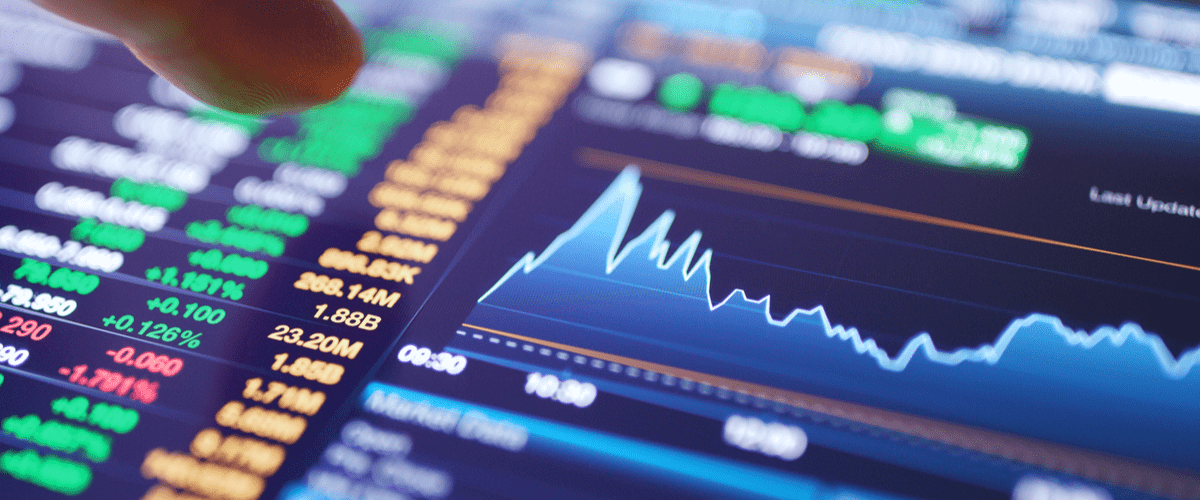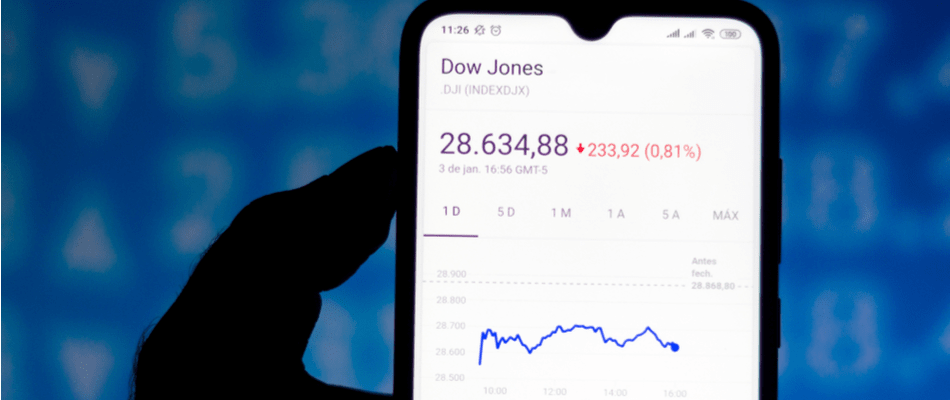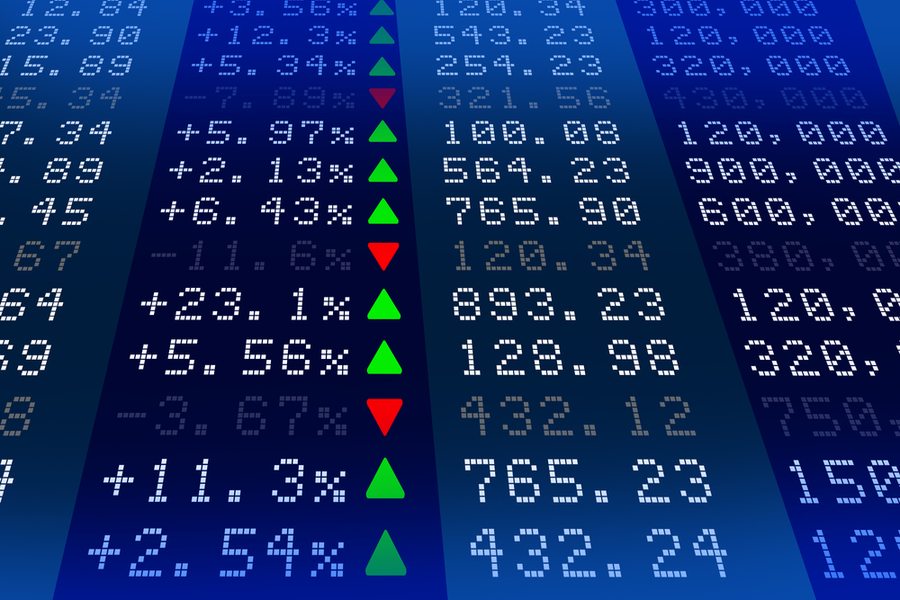
Which companies are included in the Dow Jones index?
When it comes to old stock indices , the Dow Jones, based in the United States, takes the crown. This index – under the full name Dow Jones Industrial Average Index – dates back to 1896 when it was founded by two gentlemen. They were Charles Dow and Edward Jones. A combination of both surnames formed the title for an index that at that time consisted of 12 industrial companies. Today, the Dow Jones includes 30 companies, ranging from Coca-Cola to Boeing. Read more about the composition of Dow Jones in this blog.
Composition of Dow Jones – Which companies are in Dow Jones?
As of June 23, 2021, the composition of Dow Jones is as follows; the index includes the 30 companies listed below (source: Trivano). The list is arranged alphabetically.
| # | Company | Sector |
|---|
| 1 | 3M | Industrial goods and services |
| 2 | American Express | Financial institutions |
| 3 | Amgen | Health care |
| 4 | Apple | Technology (IT) |
| 5 | Boeing | Industrial goods and services |
| 6 | Caterpillar | Industrial goods and services |
| 7 | Chevron | Energy |
| 8 | Cisco Systems | Technology (IT) |
| 9 | Coca-cola | Foods |
| 10 | Dow | Health care |
| 11 | Goldman Sachs | Financial institutions |
| 12 | Home Depot | Retail |
| 13 | Honeywell | Industrial goods and services |
| 14 | IBM | Technology (IT) |
| 15 | Intel | Technology (IT) |
| 16 | Johnson & Johnson | Health care |
| 17 | JPMorgan | The bank |
| 18 | McDonald’s | Tourism |
| 19 | Merck & Co. | Health care |
| 20 | Microsoft | Technology (IT) |
| 21 | NIKE | Consumer goods |
| 22 | Procter & Gamble | Consumer goods |
| 23 | Salesforce | Technology (IT) |
| 24 | Travelers Companies | Insurances |
| 25 | UnitedHealth | Health care |
| 26 | Verizon | Telecommunications |
| 27 | Visa | Financial institutions |
| 28 | Wal-Mart | Retail |
| 29 | Walgreens Boots | Retail |
| 30 | Walt Disney | Media |
Status of the Dow Jones Industrial Average Index
The Dow Jones is a so-called price-weighted index. This means that the share with the highest price has the most weight within the index. In this respect, the Dow Jones differs significantly from the Dutch AEX . The composition of the Dow Jones has not changed much over the years. The index gives a clear picture of the economic situation in the United States. It is also sometimes used to get a picture of the global economy, now that America is a global economy. The American economy is therefore very telling for the financial situation of the rest of the world. If you look at the historical price trend of the Dow Jones, you will see that the price collapsed considerably after the attacks on September 11, 2001. Just before the economic crisis, the price reached a peak, after which it started to decline.

Selecting Dow Jones Stocks
The 30 shares that are proud to be part of the Dow Jones are designated by the so-called Index Committee at S&P Dow Jones Indices. Their goal is to compile an index that provides a representative reflection of the business community in the United States. The composition has changed little. In that sense, it is remarkable that the Dow Jones once started with 12 shares and that these shares are no longer included in the Dow Jones.
Earlier we briefly mentioned that the Dow Jones is a price-weighted index. This means that a share with a higher price has a heavier weighting within the index. In itself this is not a strange system, but it does have one major disadvantage. The price of a share says nothing about how big a company is. It only says something about how expensive they have made their shares and therefore into how many pieces they have divided their issued capital. This means that a small company with more expensive shares has more weighting than a billion-dollar company with cheaper shares. In this context, compare the company 3M with Microsoft.
In addition, there is also criticism of the very limited composition of the Dow Jones. Many experts believe that a selection of 30 companies can never form a representative reflection of the American economy. After all, it is a large country with many large companies.
The history
Over the years, the Dow Jones has not remained the same. The first adjustments since its foundation took place in 1916. The index went from 12 to 20 shares. More than 12 years later, in 1928, this was increased again to 30 shares. Today, we still calculate with 30 shares. However, the composition is different. In 1932, 8 shares were removed, after which they were replaced by new shares. Since then, Coca-Cola has been part of the permanent selection. In addition, during the economic crisis of 2007, a number of companies were lost and are therefore no longer part of the Dow Jones. Therefore, there are usually only minor adjustments.
The original composition of the Dow Jones:
- American Tobacco
- American Sugar
- Chicago Gas
- American Cotton oil
- General Electric (GE)
- Distilling and Cattle Feeding
- Laclede Gas
- National Lead
- North American
- Tennessee Coal, Iron and Railroad
- U.S. Rubber
- U.S. Leather
Dow Jones realtime stand
The Dow Jones index is calculated between 15:30 and 22:00. The prices of the shares included in the composition are added together. The total is divided by the ‘Dow Divisor’. The result is the index index.
Possibility of pre- and after-market
The Dow Jones is not only tradable via the American stock exchange. This is advantageous, because the Dow Jones can also be traded before the stock exchange opens (pre-market) or after the stock exchange closes (after-market).
Investing in the Dow Jones
Do you want to invest in the Dow Jones? You can do this by purchasing shares from the Dow Jones. However, you can also invest in the entire index by using an index tracker, also known as an ETF . You can also speculate on an index such as the Dow Jones by using derivatives. Consider how you want to invest in the Dow Jones and choose a suitable broker. Compare all brokers at Compareallbrokers.com.
